Arch height is a major characteristic of a wide range of foot shape variants. Low arch height results in flat feet, or pes planus. A flat foot is not usually abnormal in itself, but it can predispose an individual to many musculoskeletal conditions and injuries. Therefore, it is used by non-specialists as an umbrella term to describe any foot problem which features a low arch. This is why just using a generic arch support often does not resolve an individual’s foot pain, even if he/she has flat feet. “Flat feet” is not a medical diagnosis by itself.
As lower limb specialists, podiatrists conduct a full biomechanical examination in order to make a comprehensive diagnosis of a patient’s present and future foot conditions. Addressing the low arch height is the first step.
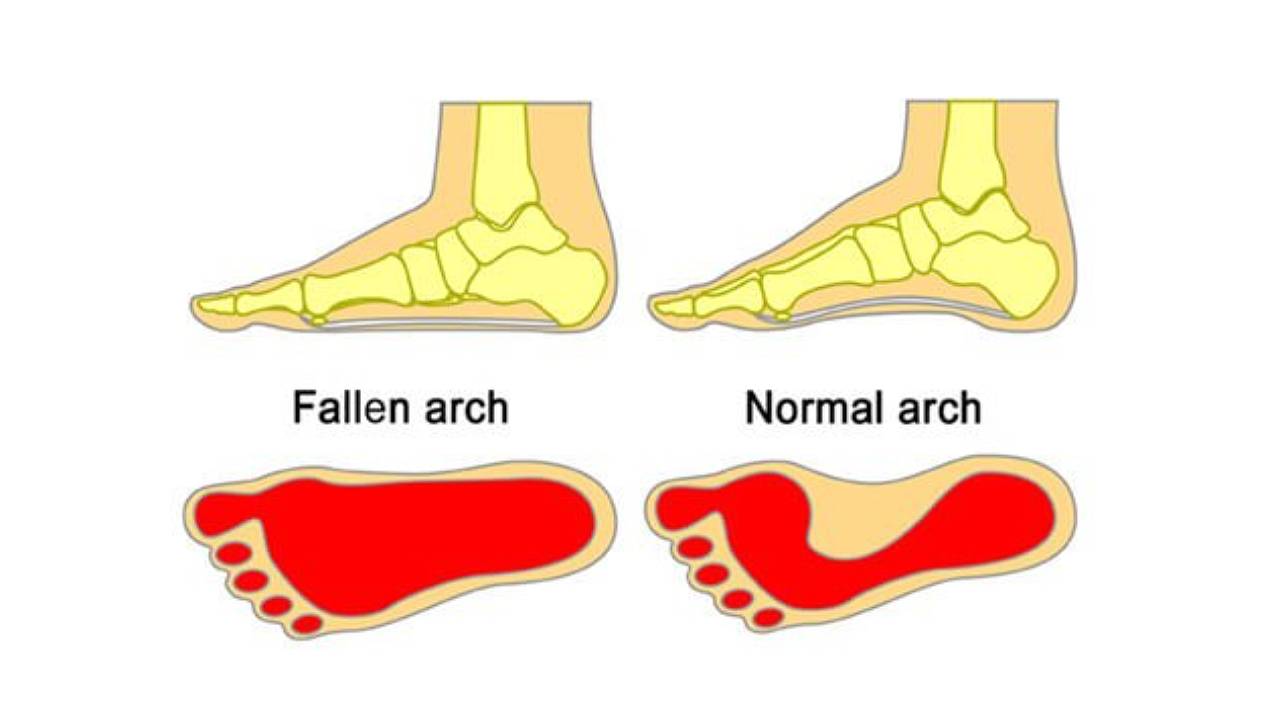
Flat Foot
Flat feet are a very common condition in Singapore. This is due to the genetic demographics of the region where this type of foot may be hereditary, acquired or due to ligamentous laxity. The artificial surfaces we walk upon every day expose our feet to greater wear and tear or degeneration.
The foot is the foundation of the whole body. Fallen arches put the feet out of alignment. Consequently, greater stress is placed on other joints in the body to help compensate. This is often the cause of soft tissue pathology; the two most common ones are Achilles tendonitis (tendon overuse injury) or Plantar fasciitis (inflammation of the fascia).
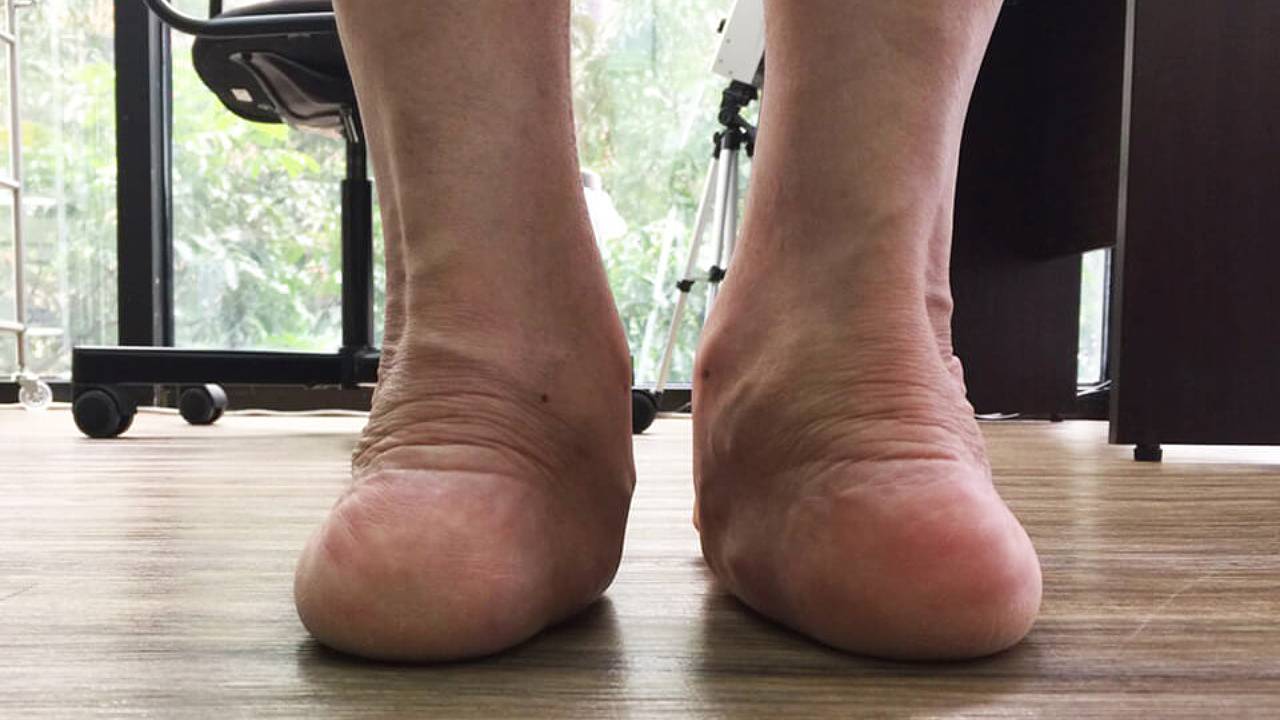
There are 2 kinds of flat feet:
- Congenital flat foot is hereditary, and present in varying degrees of severity in children as young as 2 years old. In most paediatric flat feet cases, the child may appear to have arches while they are seated or standing on tip toes. The medial arch only collapses when the child stands up. Flat footed individuals may also be diagnosed with hypermobility, a condition related to the laxity of ligaments. This laxity can also cause problems elsewhere in the lower limbs, such as the knees and hips.
- Adult-acquired flat foot can be caused by conditions such as posterior tibial tendon dysfunction (PTTD), arthritis, injury or diabetes. If unaddressed, the affected foot may deform and collapse more and more over time. This can result in loss of mobility, postural changes, and pain all the way up to the spine.
Flat footed patients may experience symptoms such as:
- Pain on the inside of the ankle and arch
- Pain in the leg and knee after activity or with high intensity sports
- Pain in the ankle due to joint impingement
Flat feet can be managed with customised foot orthotics (custom insoles) and appropriate footwear. Older individuals may require a more aggressive approach to managing their flatfoot condition. More severe cases of flat foot will require ankle foot orthotic (AFO) for stabilisation or correction.
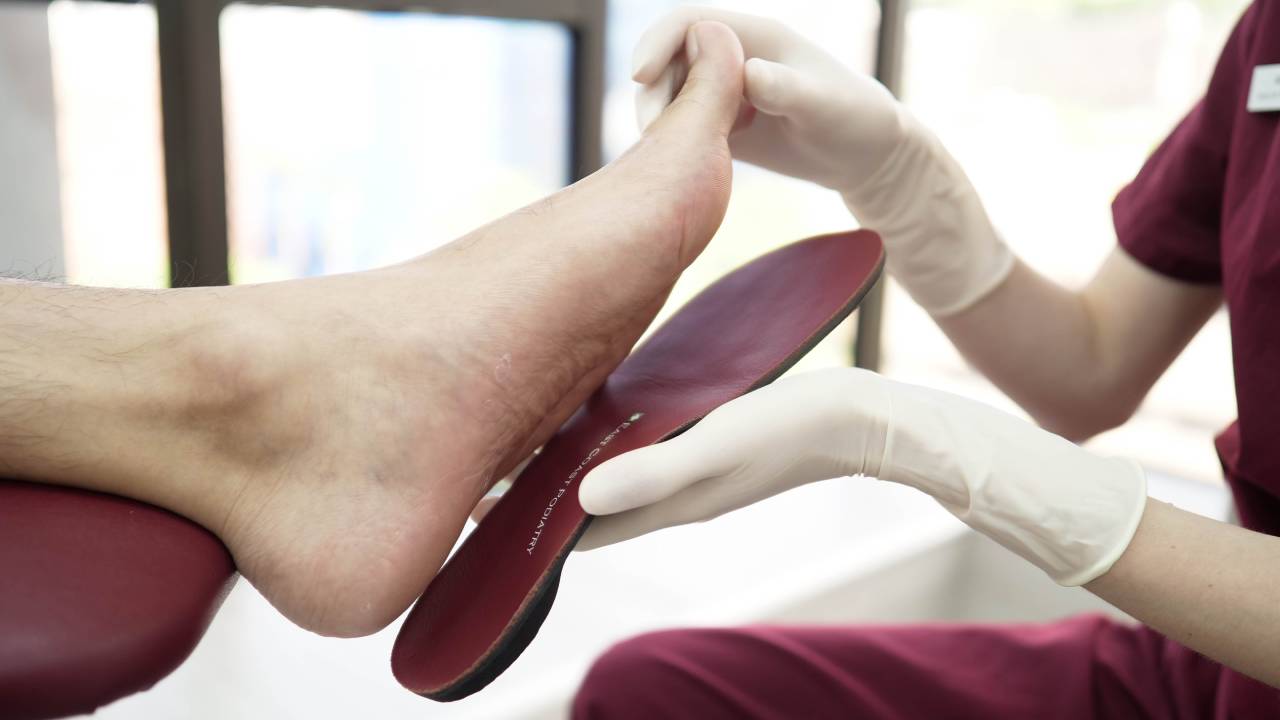
Foot Orthotic Insoles
Customising insoles for flat feet is is a common solution. These customised foot orthoses are a prescription-only medical devices tailored for individual patient needs to address specific foot pathology. The podiatrist will decide on the materials, densities and designs of the orthotics depending on the medical requirements and lifestyle choices of the patient. Due to advancements in technology and manufacturing, specific custom insoles for flat feet can also be fitted into pumps, court shoes, and even specialised footwear like soccer boots or hockey shoes.
For diabetic patients, total contact orthoses are tailored with the aim of offloading pressure and provide cushioning movement to minimise any abrasion or irritation against the skin of the foot. This serves to prevent foot ulceration that often develops in areas of high pressure.
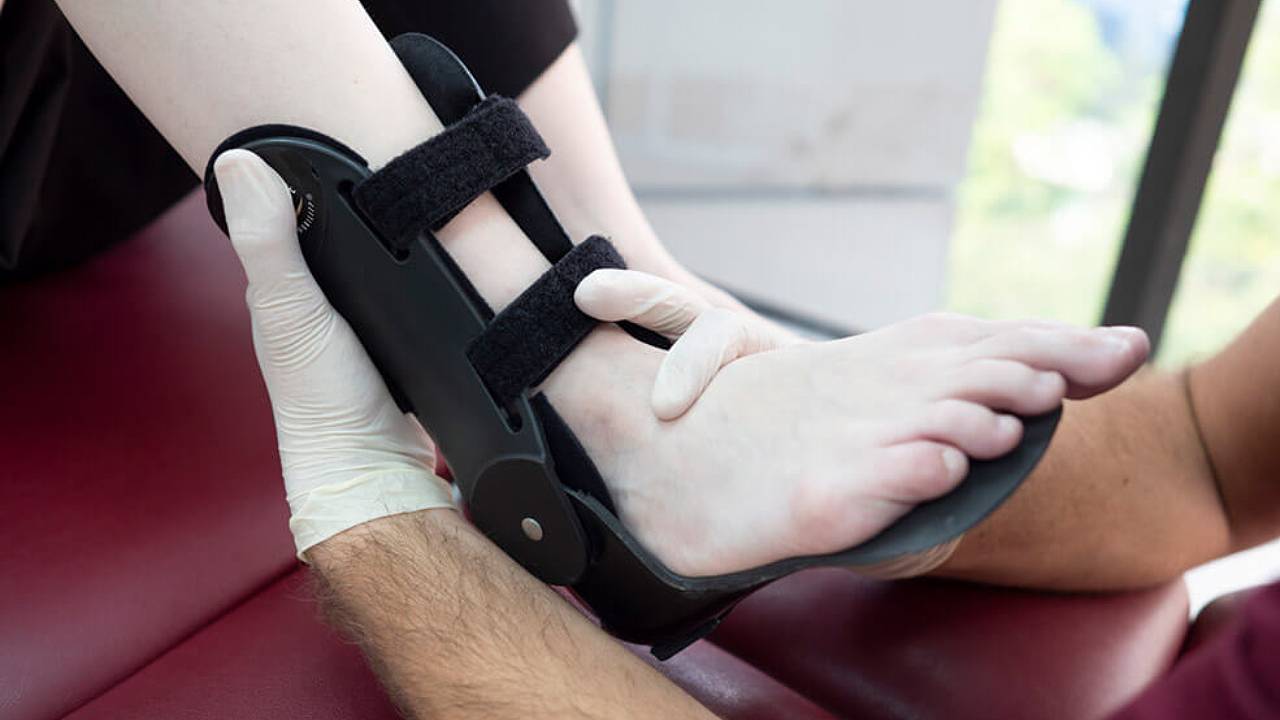
Ankle Foot Orthotics
Ankle Foot Orthotics is a highly specialised device that can accommodate almost all foot and ankle deformities to get patients back to a more normal walking gait. This device is a contoured, balanced orthotics that is articulated to the lower leg uprights; making it ideally suited to stabilise rotational forces at the midtarsal, subtalar and talocrural joints. Prescription of the device adds further enhancement or restriction of motion in sagittal, frontal, and transverse planes. It can be rigid, semi-rigid, or dynamic. They are customised with a full mould of the foot and ankle that is taken before the device is made and prescribed. The base of the AFO incorporates a full custom foot orthotic which then extends up the leg. It is designed to take into consideration a patient’s static and dynamic biomechanics while being easy and comfortable to wear due to its lightweight low-profile design.
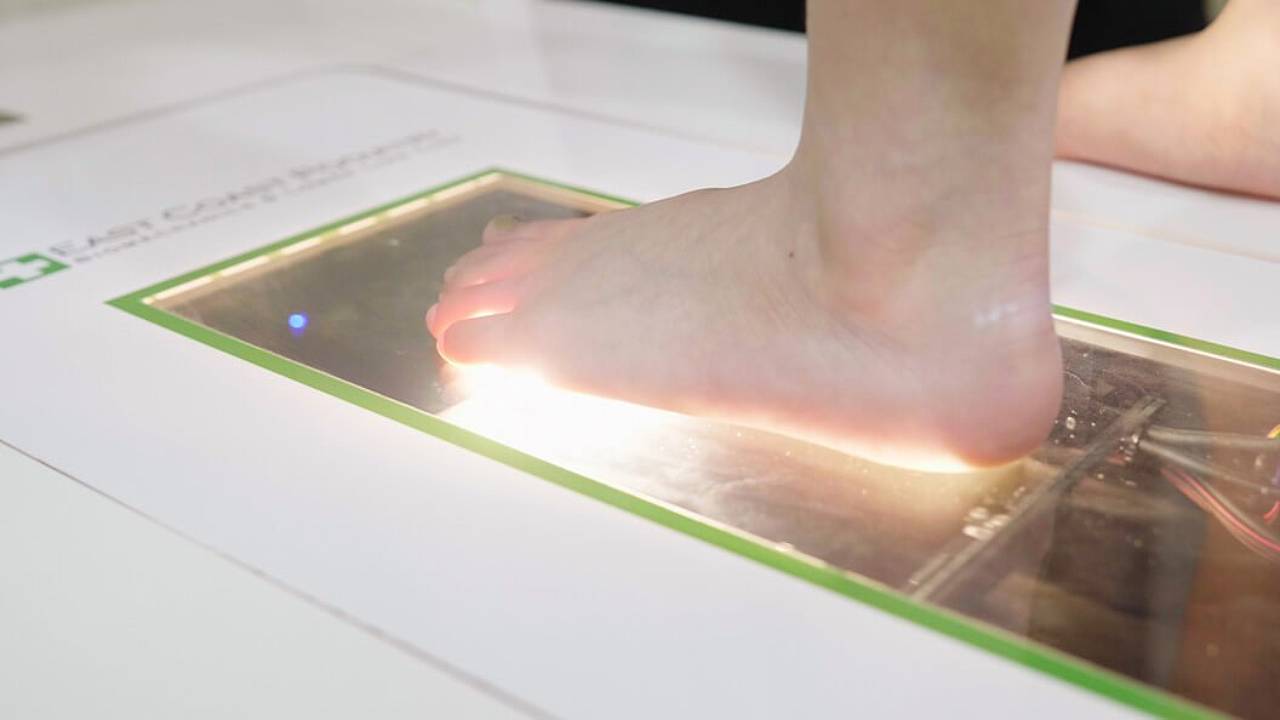
Scanning machines
At East Coast Podiatry Singapore, we utilise advanced computer-aided design and manufacturing (CAD/CAM) processes that provide an accuracy of up to +/- 0.4mm. To ensure that the 3D image of the foot is captured perfectly, the patient will undergo 3 different types of 3D scans. These scans are heavily reliant on the clinician’s skill and training to capture the foot at maximum precision.
The results of your scans will be combined with the information derived from the musculoskeletal/biomechanical assessment done by the podiatrist. This is necessary for the prescription and precise manufacturing of orthotic devices that are designed specifically to correct flat foot condition.




